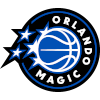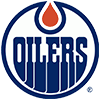Welcome to Part II of 2020 NFL Breakout Players, an offseason series that's more or less self-explanatory. The first edition, written at the end of January, discussed 22 candidates to achieve fantasy stardom for the first time in 2020. Our list ranged from the obvious (Miles Sanders) to the obscure (Josh Oliver), largely focusing on "second-year leaps" and "post-hype sleepers".
Now we'll check back in on those 22 players, determining if their breakout odds have improved, declined or stayed the same since the beginning of the offseason. Additionally, we'll run through some of the notable omissions from the first list, including T.J. Hockenson, Kenyan Drake and Darrell Henderson.
The Second-Year Leapers
↑ QB Kyler Murray, 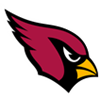 Arizona Cardinals
Arizona Cardinals
Murray is a No. 1 overall pick who finished his rookie season at QB8 overall and QB11 in points per game. He did it with a first-year head coach, a subpar offensive line and no true No. 1 receiver. Now, Murray and Kliff Kingsbury both have a full year of NFL experience, and DeAndre Hopkins will take on snaps that went to Damiere Byrd, KeeSean Johnson and Trent Sherfield last season. My 2020 rankings (as of mid-April) have Murray in the second tier of QBs alongside Deshaun Watson, Russell Wilson and Dak Prescott. I put the 22-year-old at QB4, but anywhere between third and sixth seems fair.
↔️ QB Daniel Jones, 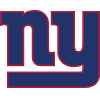 New York Giants
New York Giants
I thought I'd be a heavy investor, but Jones is going a bit too early for my liking — QB12, ADP 114 in April best ball drafts on BB10s. I suppose that's reasonable, if slightly optimistic, and he'll probably be available later than the 10th round in leagues where people only roster one or two signal callers. In any case, Jones has good skill-position talent around him, and he's already shown he can make difficult throws and add some points on the ground, so now we just need to see if he can cut down on the brutal mistakes. In leagues where many teams roster only one QB, it's better to take a shot on Jones' ceiling than to go with a boring, scramble-averse veteran like Jared Goff or Ben Roethlisberger.
↑ RB Devin Singletary, 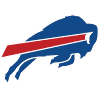 Buffalo Bills
Buffalo Bills
Melvin Gordon to Buffalo rumors didn't last long, and while that may have been a case of smoke without fire, it wouldn't have come as any surprise if the Bills had brought in a lesser veteran to take on some backfield snaps. Maybe it still happens, or maybe they use a mid-round pick on the position, but we can at least call it moderately good news for the Singletary breakout case when we're approaching mid-April and the depth chart behind him consists of nothing but T.J. Yeldon, Taiwan Jones and Christian Wade. Bills GM Brandon Beane isn't ready to commit to Singletary as a workhorse, but Beane did at least hint at the possibility (per PFT):
"I think Devin can do either or. He's an unselfish player," Beane said. "If we want him to be the workload guy, I think he could definitely do it. I think Year Two is going to be better for him."
↑ RB Miles Sanders, 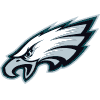 Philadelphia Eagles
Philadelphia Eagles
This is basically the same idea as with Singletary. Last year's veteran backfield mate, Jordan Howard, is no longer on the roster and hasn't been replaced. The Eagles have more draft capital than the Bills, but Philly also has bigger needs to fill, namely at wide receiver and linebacker. The Week 1 backfield could end up being Sanders, Boston Scott and a special teams guy.
↔️ RB Tony Pollard, 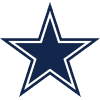 Dallas Cowboys
Dallas Cowboys
No change here. Pollard probably won't do much if Ezekiel Elliott stays healthy but should push for RB1 stats if his superstar teammate misses time. Given current roster constructions, Pollard and Latavius Murray are the handcuffs with the best odds to take on three-down roles in the event of injuries to the starters in front of them. I think that's more important than trying to figure out which running backs will or won't get injured, though I do trust Zeke and Alvin Kamara a bit more than Dalvin Cook (Re: Alexander Mattison).
↑ RB Darrell Henderson,  Los Angeles Rams
Los Angeles Rams
Henderson is sure to be discussed ad nauseam for a second straight offseason, this time with Todd Gurley out of the picture. There's a clear opening for the starting job in LA, but this isn't the same setup Gurley enjoyed in 2017 and 2018 when he piled up carries, targets and red-zone chances on a team with first-rate blocking and a solid defense. The Rams are mostly bringing back the same O-line starters that fell off a cliff last year, and their defense contains an odd mix of star power and glaring holes.
Then again, struggles on a team level could work in favor of Henderson over Malcolm Brown, who ran a 4.62 40-yard dash coming out of college and has caught only 20 passes on 568 offensive snaps in the NFL. Despite his disappointing rookie season that ended with ankle surgery, Henderson is the one with upside as both a runner and receiver. Brown's 197 carries for the Rams have yielded an average of 3.9 yards, with 20 representing the long gain.
↑ WR Marquise Brown, 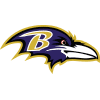 Baltimore Ravens
Baltimore Ravens
The Ravens allowed Seth Roberts to leave, haven't signed a replacement and now have two roster areas (interior OL, linebacker) that appear more needy than the WR corps. That's not to say they won't draft a receiver or two, but I think it's between Brown and Mark Andrews for the team target lead in 2020. Don't forget that Brown played his rookie campaign at less than full strength and finished things out with 126 yards in a playoff loss.
↔️ WR Deebo Samuel, 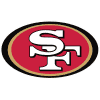 San Francisco 49ers
San Francisco 49ers
I staked my claim as a Deebo fanboy last spring, but even I find it a bit confusing to see him selected ahead of Terry McLaurin, DJ Chark and Michael Gallup in early 2020 fantasy drafts (WR25, ADP 58). Personally, I think Samuel will develop into a well-rounded receiver who can threaten defenses at every level, but the current draft price suggests it's something he's already shown us, which really isn't the case. He made his living on screens, slants and end-arounds last season, ranking second among qualified wide receivers with 8.5 YAC per reception.
His 7.5 aDOT was eighth-shallowest among WRs with 50-plus targets, and his 9.9 YPT was an outlier in the sub-8.0 aDOT group (even Cooper Kupp and Robert Woods were well below 9.0 YPT). I guess my point is that I still believe in Samuel, but I also believe he should be a sixth-round pick in 12-team leagues instead of a fifth-rounder. McLaurin, Chark and Gallup have already shown the downfield ability that we're hoping Samuel can add.
↓ WR Mecole Hardman, 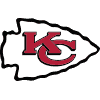 Kansas City Chiefs
Kansas City Chiefs
The Hardman breakout case largely relied on the removal of Sammy Watkins, who agreed to convert some of his base salary to incentives for 2020, the third and final season of his rookie contract. I still love Hardman in dynasty leagues, but it's hard to project more than four or five targets per game for the No. 3 wide receiver in an offense that needs to feed Travis Kelce and Tyreek Hill. Plus, the Chiefs re-signed snap burglar Demarcus Robinson.
Rookie wideouts Mecole Hardman and Deebo Samuel ranked 1st and 3rd in YAC per reception during the regular season among WR (min. 25 receptions).#SBLIV | #ChiefsKingdom | #GoNiners pic.twitter.com/ZhmMcvSrIX
— Next Gen Stats (@NextGenStats) January 29, 2020
↓ WR N'Keal Harry, 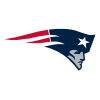 New England Patriots
New England Patriots
I'm not quite ready to cross Harry off the list, but I can't imagine he'll see better quarterback play than what he might have gotten from Tom Brady this year. Let's hope the Patriots acquire Cam Newton, Andy Dalton or a promising rookie, rather than allowing Jarrett Stidham and Brian Hoyer to duke it out.
↓ WR Andy Isabella,  Arizona Cardinals
Arizona Cardinals
Here we have our first name crossed off the list, with the DeAndre Hopkins trade leaving Isabella at No. 4 on the depth chart. That No. 4 WR spot is more important under Kliff Kingsbury than it would be under any other coach, but we're probably talking two or three targets per game if Hopkins, Christian Kirk and Larry Fitzgerald are all in the lineup. Plus, if last season is any indication, Isabella will have to battle other players to win the aforementioned No. 4 spot.
↔️ TE Noah Fant, 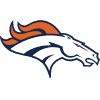 Denver Broncos
Denver Broncos
The Broncos haven't brought in any talent at tight end or wide receiver, but the addition of Melvin Gordon could shift team target share slightly in favor of the backfield. We'll call it a net draw for Fant, whose rookie season was equally defined by three gains of 40-plus yards and five drops. The Eric Ebron comparisons are almost cliché at this point, but I'm putting it out there anyway because I think it's accurate. Of course, Ebron with better hands and sharper focus would be a monster, so this isn't the damning comp it might appear to be at first glance. If the season were to start today, Fant would be the favorite to finish second on his team in targets.
↔️ TE T.J. Hockenson, 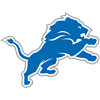 Detroit Lions
Detroit Lions
Rookie tight ends usually stink, so we shouldn't be too discouraged when a guy like Hockenson or Fant is mediocre in a debut campaign. Gronk was a beast from the jump, but other top tight ends typically didn't have much fantasy impact as rookies: Travis Kelce redshirted with a knee injury, Zach Ertz put up a 36-469-4 line, Mark Andrews did 34-552-3, Darren Waller was a practice-squad WR, etc. Heck, even legends like Tony Gonzalez and Shannon Sharpe didn't put up big receiving stats until Year 3.
My point is that Hockenson is as good of a breakout candidate as any, with his 367 yards in 12 games last season representing a typical outcome for a first-round tight end. Sitting at ADP 118, TE14 in April drafts on BB10s, Hockenson is tied with Marquise Brown as my most heavily rostered player so far, landing a spot on eight of 16 teams. I do wonder if the surprisingly cheap price might be related to concern over Hockenson's season-ending ankle injury from late November. A report from January didn't sound great, but the timing of the injury should still give him plenty of room to be ready for Week 1.
↑ TE Irv Smith, 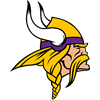 Minnesota Vikings
Minnesota Vikings
Minnesota ranked second in the NFL last season with 35 percent usage of 12 personnel (two WRs, one RB, two TEs), regularly putting Smith and Kyle Rudolph on the field at the same time. The frequency peaked at 56 percent in a four-game span Weeks 10-14, with Smith playing at least 71 percent of snaps in each of those games. Part of my optimism for 2020 involves the expectation of Minnesota continuing to lean on those multi-TE looks in a post-Diggs world, but I'm also accounting for the possibility of Smith displacing Rudolph as the lone TE in 11 personnel on passing downs.
Rudolph certainly isn't paid like a part-time player, but he was never explosive even at this best, and he's now 30 years old and coming off five-year lows for catches (39), targets (48) and yards (367). Apart from the TD category, Smith put up similar numbers as a 21-year-old, and his 4.63 speed is probably more useful than Rudolph's 265-pound frame on downs where the Vikings know they need to throw. The second-year pro has a real shot to emerge as the No. 2 target for Kirk Cousins.
↓ TE Josh Oliver, 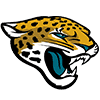 Jacksonville Jaguars
Jacksonville Jaguars
This one admittedly was aspirational, perhaps reflecting my desire for a tools-y, relatively unknown tight end to come out of nowhere and set the league on fire a la George Kittle and Darren Waller. The Jaguars' signing of Tyler Eifert on a two-year, $9.5 million contract doesn't necessarily mean they don't share my Oliver enthusiasm long term, but it definitely puts up a roadblock for 2020 targets and passing-down snaps.
Additional Candidates: ↔️ QB Drew Lock, ↑ QB Easton Stick, ↓ RB Damien Harris, ↔️ RB Travis Homer, ↑ WR Parris Campbell, ↔️ WR Darius Slayton, ↔️ TE Dawson Knox, ↓ TE Kahale Warring
The Post-Hype Sleepers
↑ QB Baker Mayfield, 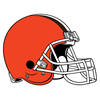 Cleveland Browns
Cleveland Browns
A lack of weapons certainly wasn't the problem last year, but it doesn't hurt to get more help with Austin Hooper coming in at tight end. Perhaps more important, the Browns scored a massive upgrade with the signing of RT Jack Conklin, who graded out as PFF's No. 10 offensive tackle last season, while Browns RT Chris Hubbard landed 76th out of 80 qualified players. The blindside spot remains problematic, but a number of mock drafts — including the latest from RotoWire's Mario Puig — have Cleveland addressing that deficiency in the first round.
↑ RB Kenyan Drake,  Arizona Cardinals
Arizona Cardinals
I'm never quite sure if we should really call it a breakout or not when dealing with someone like Drake, who already produced as an RB1 over the second half of last season. Actually, I had the same thought at this time two years ago, after watching Drake do RB1 stuff in December of 2017. The bet here is that he finally gets those touches throughout a full season, without sacrificing the impressive efficiency we've consistently seen. With David Johnson out of the picture, I'll bet Yes.
↑ RB Kerryon Johnson,  Detroit Lions
Detroit Lions
In a departure from the past two offseasons, Lions GM Bob Quinn hasn't made a strong push to add a veteran to his backfield, perhaps learning a lesson from the failings of LeGarrette Blount and C.J. Anderson. Maybe it's a sign of confidence in backup RB Bo Scarbrough rather than any commentary on Johnson, but I definitely prefer the situation where the team doesn't feel obligated to hand carries to an overpaid, mediocre veteran. Let Scarbrough, Ty Johnson and a rookie duke it out for backup work while Kerryon prepares for the unchallenged lead role. The talent isn't on Dalvin Cook's level, but I do see other similarities between Kerryon 2020 and Cook 2019. (Insert my usual warning about injuries being less predictable than you think they are.)
↔️ RB James Conner, 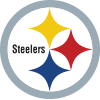 Pittsburgh Steelers
Pittsburgh Steelers
Speaking of injuries... Conner missed six full games and portions of two other last season, bothered by an assortment of ailments rather than any one devastating issue. That's probably for the better in terms of returning to health during the offseason, but it does raise questions about his ability to maintain a physical running style. To be honest, I'm not really sure what I was thinking when I included Conner in the first edition of this series... after all, he already broke out as an RB1 in 2018 and now hopes to recapture that form. With Ben Roethlisberger expected back in the lineup and both Jaylen Samuels and Benny Snell also coming off disappointing seasons, Conner has a nice opportunity to at least make it back toward high-end RB2 turf.
↔️ RB Damien Williams,  Kansas City Chiefs
Kansas City Chiefs
Williams finished 2019 at No. 2 among qualified rushers in yards after contact per carry (3.2) and No. 3 in broken tackle rate (one for every 7.4 carries). I'm skeptical that he'll maintain such an impressive level of power and elusiveness long term, but it was at least a nice temporary addition to the toolkit from a guy whose value mostly lies in team context rather than talent. While the DeAndre Washington signing isn't a major concern for Williams, we still need to be wary of the Chiefs potentially drafting backfield competition.
↓ WR Robby Anderson, 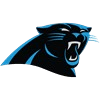 Carolina Panthers
Carolina Panthers
Reaching his ceiling might require leaving New York, but I don't think Anderson will fare much better in Carolina, catching passes from Teddy Bridgewater in an offense where volume is dominated by Christian McCaffrey and D.J. Moore. This signing hurt the breakout case for both Anderson and Curtis Samuel, though I still believe they have 1,000-yard talent under the right circumstances. Unfortunately, these circumstances aren't the right ones. Anderson's twitter account, on the other hand, is always perfect.
Quaritine is not an excuse to not take care of your hygiene because your not going in public don't lose y'all selves re build y'all selves
— Robby Anderson (@chosen1ra) March 22, 2020
WR Sterling Shepard,  New York Giants
New York Giants
Shepard averaged 14.2 PPR points per game in 2019, with concussion symptoms and a lack of scoring chances holding him back from bigger things. He's shown the versatility to win on a variety of routes, playing inside or out as needed. Concerns about the concussions and target competition have pushed Shepard well outside the top 100 in early drafts, but he might just be the Giants' best wide receiver, and he's never averaged fewer than 6.6 targets per game in a season. A breakout year from Daniel Jones could mean a breakout year for any combination of Shepard, Darius Slayton and Evan Engram.
Additional Candidates: ↔️ QB Jimmy Garoppolo, ↑ RB Ronald Jones, ↔️ RB Derrius Guice, ↓ WR Christian Kirk, ↓ WR Curtis Samuel, ↔️ WR Dede Westbrook, ↔️ TE O.J. Howard, ↔️ TE Evan Engram
The Best of the Rest
↓ QB Sam Darnold, 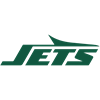 New York Jets
New York Jets
I really thought the Jets would do more this offseason to set up Darnold for success. Sure, they can still come away from the draft with CeeDee Lamb or Jerry Jeudy, but it isn't a sure thing, and it would've been nice to keep Robby Anderson instead of saving a few bucks replacing him with Breshad Perriman. I also thought the Jets did some weird stuff with their offensive line, signing a bunch of guys that may or may not be upgrades. Connor McGovern is proven as an above-average starter at center, but we can't say the same for OT George Fant or G/T Greg Van Roten, plus the Jets seem to have overpaid to re-sign substandard LG Alex Lewis. This feels like a rudderless offseason.
↑ RB Justin Jackson, 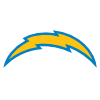 Los Angeles Chargers
Los Angeles Chargers
Melvin Gordon left and hasn't been replaced, potentially setting up Jackson to handle the lesser half of a timeshare with Austin Ekeler. Of course, the "lesser half" might include a larger share of carries (but not targets) that includes goal-line work, so we could see two fantasy-relevant players out of the Chargers backfield again. Granted, the team's next quarterback isn't likely to target RBs as often as Philip Rivers did, and we still aren't sure if it will be Tyrod Taylor, a rookie, or, fingers crossed, my man Easton Stick.
↔️ WR Courtland Sutton  Denver Broncos + WR Calvin Ridley,
Denver Broncos + WR Calvin Ridley, 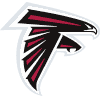 Atlanta Falcons
Atlanta Falcons
I'm not sure if most people view the bump from WR2 to WR1 as a breakout, but it feels like one to me. That's especially true for Sutton, who was more of a low-end WR2 or high-end WR3 in terms of per-game production last season, but with regular flashes of high-end WR1 talent. I think he gets there this season, and I also believe the Atlanta offense can support a pair of top-12 receivers.
↑ TE Hayden Hurst,  Atlanta Falcons
Atlanta Falcons
Hurst wasn't even an honorable mention in the first iteration of this series, projecting as the No. 3 tight end in a run-heavy Baltimore offense. The 2018 first-round pick turned 25 before he played his first NFL game, but he did well with his limited work last season in Baltimore (76.9 percent catch rate, 8.9 YPT), and he shouldn't lack for opportunity in a pass-happy Atlanta offense where Jaeden Graham, Carson Meier and Khari Lee are the veteran alternatives at tight end. Hurst may not be a special player, but neither is Austin Hooper, and we all saw what he did last year.
Additional Candidates: ↔️ QB Ryan Tannehill, ↔️ QB Derek Carr, ↔️ RB Raheem Mostert, ↓ RB Duke Johnson (I'll never give up on this one), ↓ WR Tre'Quan Smith, ↔️ WR Allen Lazard, ↔️ TE Dallas Goedert, ↔️ TE Mike Gesicki, ↑ TE Tyler Higbee















